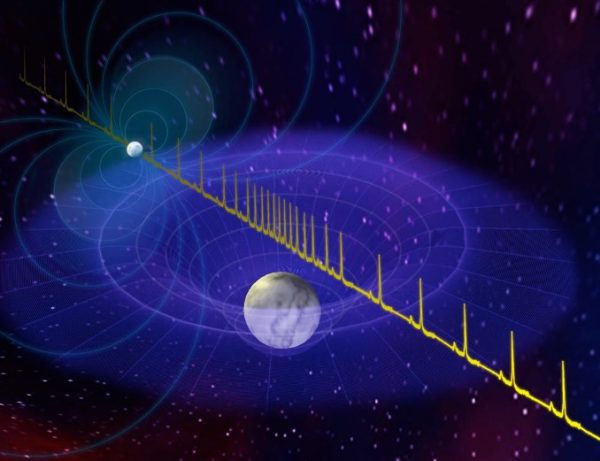Most massive neutron star near black hole tipping point – Astronomy Now – Astronomy Now Online

Astronomers have found the most massive neutron star yet discovered, a rapidly rotating pulsar orbiting in lockstep with a white dwarf that crams 2.17 solar masses into a city-size sphere just 30 kilometres (18.6 miles) across. The pulsar appears to be close to the tipping point between matter’s ability to resist the crush of gravity versus collapse into a black hole.
“Neutron stars are as mysterious as they are fascinating,” said Thankful Cromartie, a graduate student at the University of Virginia and a pre-doctoral fellow at the National Radio Astronomy Observatory in Charlottesville, Virginia. She is first author of a paper accepted by Nature Astronomy.
“These city-sized objects are essentially ginormous atomic nuclei. They are so massive that their interiors take on weird properties. Finding the maximum mass that physics and nature will allow can teach us a great deal about this otherwise inaccessible realm in astrophysics.”
Neutron stars and their fast-spinning cousins – pulsars – are formed in supernova explosions when the core of a massive star runs out of nuclear fuel. In the sudden absence of fusion energy radiating outward, gravity takes over and the core collapses, blowing away the star’s outer layers in spectacular fashion.
Depending on how much mass is present, the collapse will either halt due to quantum mechanical effects, leaving a compact neutron star in its wake, or continue to the point where a black hole forms.
Observations of gravity waves generated in the merger of two neutron stars suggests that tipping point is very close to 2.17 solar masses.
“Neutron stars have this tipping point where their interior densities get so extreme that the force of gravity overwhelms even the ability of neutrons to resist further collapse,” said Scott Ransom, an astronomer at NRAO and coauthor on the Nature Astronomy paper. “Each ‘most massive’ neutron star we find brings us closer to identifying that tipping point and helping us to understand the physics of matter at these mindboggling densities.”
The newly confirmed record holder is a millisecond pulsar known as J0740+6620. In a chance alignment, the pulsar and it’s white dwarf companion orbit each other edge on as seen from Earth.
Cromartie and her colleagues took advantage of that alignment to measure the mass of the white dwarf. Because the mass of the dwarf distorts the space around it in accordance with Einstein’s theory of general relativity, radiation from the pulsar is delayed on its way to Earth by about 10 millionths of a second when the pulsar passes behind its companion.
That delay was a direct indication of the white dwarf’s mass and from that, along with the time needed to make one rotation, the researchers could calculate the mass of the pulsar.
“The orientation of this binary star system created a fantastic cosmic laboratory,“ Ransom said.






